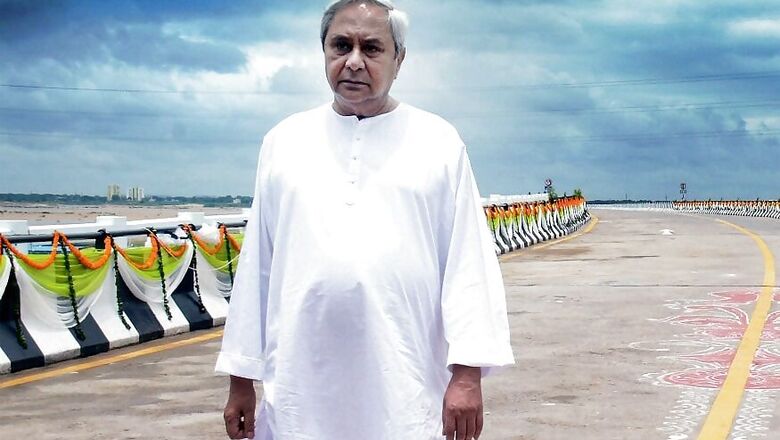
views
Voters in five Lok Sabha and 35 Assembly constituencies of Odisha will cast their votes in the second phase of simultaneous elections on Thursday. As the state witnesses unprecedented four-phased election this time, stakes are the highest for the ruling Biju Janata Dal (BJD) in Round 2.
BJD chief and four-time chief minister Naveen Patnaik is seeking a fifth term in office, contesting for the first time from Bijepur in western Odisha in addition to his traditional coastal constituency of Hinjli. Both these seats, and Patnaik’s future as one of the tallest political leaders of the state, will be on the line in the second phase.
The BJD, which has been in power in the state since 2000, had won 23 of these 35 seats in 2014 with a vote share of 42 per cent. The BJD eventually registered a thumping majority of 117 seats in the 147-seat Assembly. The performance by the party was an improvement over its 2009 tally when it had secured 19 seats with roughly similar amount of votes during the 2009 Lok Sabha polls.
The Congress and the BJP had won six and four seats, respectively, in 2014.
The Saffron Challenge
The only Lok Sabha seat the BJD lost out on in 2014 was won by the BJP. While the saffron party had just managed to scrape through to register the win with a thin margin of 1.86 per cent, it hinted towards a larger tectonic shift in the politics of the state.
This time around, the BJP has made significant gains in the state over the last couple of elections, emerging as the main challenger to the incumbent and pushing the Congress closer towards the third spot.
For instance, in the Lok Sabha elections alone, the BJP collected an overall vote share of 22 per cent in 2014 compared with 17 per cent in 2009. The same for Congress, however, fell from 33 per cent to 26 per cent. Its seat tally came down from six to zero in the meanwhile.
On a more microcosmic level, among the five seats going to polls in the second phase, the BJP improved its vote-share from 19 per cent to 23 per cent, whereas the Congress saw a decline from 34 per cent of votes to 28 per cent, losing out on two seats it had won in 2009.
In the Assembly segments, too, while the BJP won four seats each in 2009 and 2014, it bettered its vote share from 17 per cent to 19 per cent. The Congress, at the same time, came down from 11 seats and 29 per cent of the votes in 2009 to six seats and 26 per cent votes in 2014.
During the panchayat elections held in 2017, the most recent elections in the state, the BJP’s emergence as the principal opposition became further apparent.
The region going to polls in phase two constitutes at least 207 of the total 851 Zila Parishads (ZPs) in the state. Although, the BJD was way ahead of the second-placed BJP in terms of overall results, the saffron party put up a stronger fight in this region. Out of the 207 ZPs falling in this segment of the scheduled polling, the BJD secured 104 seats with the BJP not far behind at 79 seats. The Congress, on the other hand, was reduced to just 19 ZPs. It is, perhaps, because of the rising influence in the state and the party looking east to make up for its anticipated losses in the Hindi heartland that PM Narendra Modi has addressed the highest number of election rallies (6) in Odisha since the date of announcement of polls till April 16.
Anti-Incumbency
2019 is being seen as an important election for Patnaik, especially after the anti-incumbency sentiment unseated BJP rule in three states last year —Chhattisgarh, Madhya Pradesh and Rajasthan. The results had an impact on political circles in Odisha, where Patnaik is in his 19th year.
Experts had earlier pointed out to News18.com that “farmers in Odisha are having to resort to distress sale of paddy while the government is content to blame the Centre for refusing to accept the unanimous resolution passed in the state Assembly for raising the MSP of paddy to Rs 2,950.”
There are some unfulfilled promises as well. Their goal of providing at least 35 per cent irrigation in each of the state’s 314 blocks, which was also prominently mentioned in every manifesto of the BJD since 2000 when it came to power, has remained a pipe-dream with the target achieved in just 114 blocks so far.
There is discontent among women over promoting liquor, among farmers who have indulged in distress sale and among ration card holders for not being covered in the flagship scheme.
Read all the Latest News, Breaking News and Coronavirus News here


















Comments
0 comment